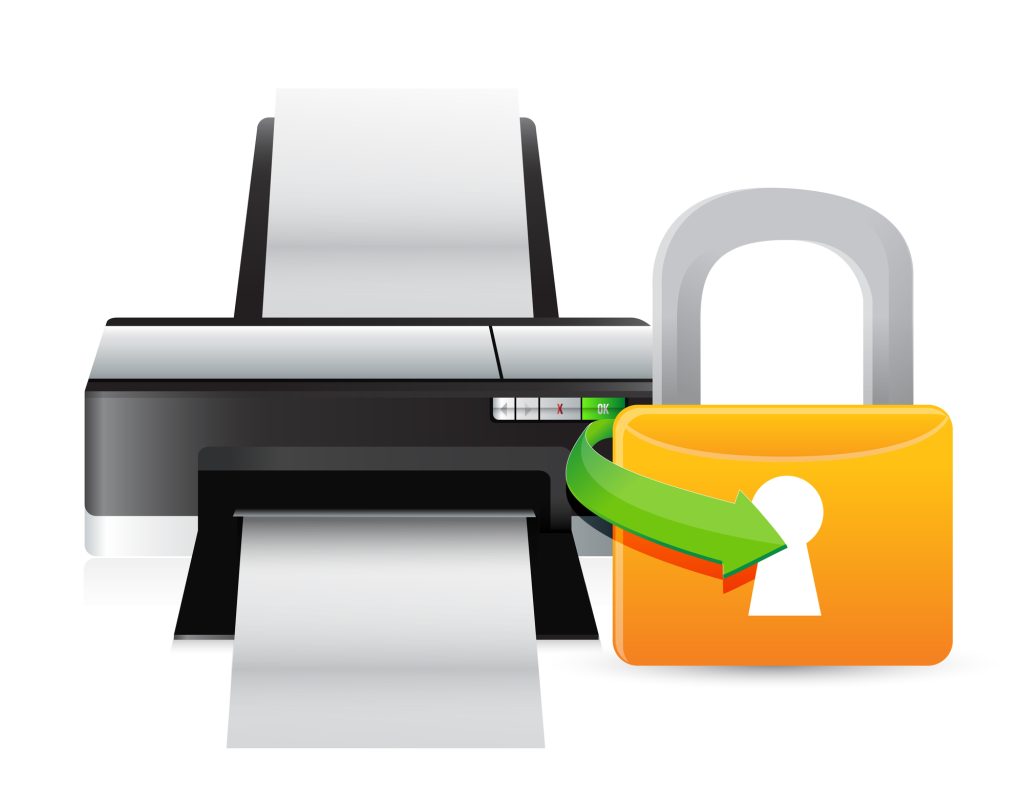- October 27, 2022
- Catagory Managed IT Services
Your Printers Need Good Cybersecurity, Too
Today’s smart printers must be protected like any other endpoint in your organization – because most printers today are multi-function devices with onboard storage and are part of your office network, threat actors see them as a prime target.
If you’ve not thought to include your printing infrastructure as part of your overall security strategy, now’s the time – and your managed service provider can help.

Believe or not, your printer is one the most vulnerable endpoints on your network, and a hacked printer will at the very least inconvenience your users and possibly threaten your entire business. In the same way that an employee smartphone or remote worker’s laptop is a gateway to mission critical systems and information on your enterprise network, your fleet of printers represent computing endpoints that can be hacked.
Just as people used to send funny jokes via fax machines, networked printers are now the target of pranks, with hackers infiltrating through open printer ports to execute bogus test page with messages on them to let the organization they’ve been breached. More extreme examples involve hackers using unsecured printers to spew out ads and random documents no one your company wants – and wasting paper is the least of your worries.
If your networked printer gets hijacked, you should be as alarmed as if your laptop screen was suddenly filled with pop up ads. And just like your laptop – or smartphone – a printer is a great jumping off point for threat actors to sneak into your office network while your users are distracted by failed print jobs.
You may not even get any indication your printer has been compromised. Rather than bother with silly pranks, a serious hacker will use their access to move around your network until they find a way to do serious damage by stealing data or holding it hostage with ransomware. Before you realize it you’ve been compromised, it may be too late to prevent damage to your business and reputation.
But like any endpoint, a network printer can be secured by following protocols that prevent them from being accessed remotely or by unauthorized users. A managed service provider can help you audit and secure your printer fleet as part of a broader strategy to secure your IT infrastructure.
- March 31, 2022
- Catagory Document Management
Assess your hybrid office for effective print security
The need for printer security has waned during the remote work era, but as more employees return to the office, consider reviewing your fleet and how you’re managing it.
Protecting hard copies is especially important today given privacy legislation and other regulatory frameworks that outline how businesses must handle Personally Identifiable Information (PII), which is subject to the Personal Information Protection and Electronic Documents Act (PIPEDA) or the General Data Protection Regulation (GDPR).

Just as critical is that your employees may be printing sensitive business information, including financial data or other proprietary intellectual property that gives you competitive advantage in your industry. Many security teams today are more focused on making sure data doesn’t leak through corporate firewalls or via a remote worker, but with office life returning to normal, corporate data can be compromised or stolen in hard copy.
A managed print services strategy contributes to better endpoint security and controls access to any printed materials, which have the same potential to lead to a security or compliance breach if the wrong person gets a hold of a stack of paper that contains sensitive information.
Older printers are holding you back
An assessment of your current print infrastructure will likely reveal there’s room for upgrades. Older, legacy print technology is not only a security threat, it’s also a barrier to productivity, collaboration, efficiency.
Older devices are likely to break down more frequently, which means you’re pulling IT resources away from strategic projects for frequent break / fix incidents such print jams and toner shortages. This impairs employee productivity, too, in the form of slower outputs in terms of pages per minute. Software compatibility issues are also amplified if your office workstations are being modernized at a faster pace. Older printers are also less energy efficiency and costing you more in electricity.
High electricity consumption also means your business isn’t as sustainable is it could be. Retiring your older printers as part of a managed print assessment can help you evaluate how much you really need to print and establish greener practices to reduce waste. A more modern, efficient printer fleet can reduce paper use and improve ink and toner management, which also contributes to sustainability, as modern toner cartridges can be recycled and turned into new ones, and overall consumption can be reduced.
People will always want to print
Even organizations that are aiming for a paperless office will always have some hard copy output – accounting for human behavior is an essential part of any managed print services strategy. As offices get busy again, there’s going to be the potential for the wrong person to grab documents from a printer they shouldn’t have and walk out the door with them. So long as people are inclined to print out information in hard copy, if only for their own personal convenience, there will be a need to secure paper documents.
In the meantime, legacy print technology is costing you more money than necessary by having an impact on your budget, efficiency, productivity, and sustainability, while also posing a security risk. Just as a leaked email or hacked database can put the future of a business in a severe jeopardy and disrupt operations, so too can a stolen printed document.
A managed print services strategy beginning with a thorough assessment bolsters your endpoint security with printed output in mind.




 Latest Blogs
Latest Blogs FAQ
FAQ